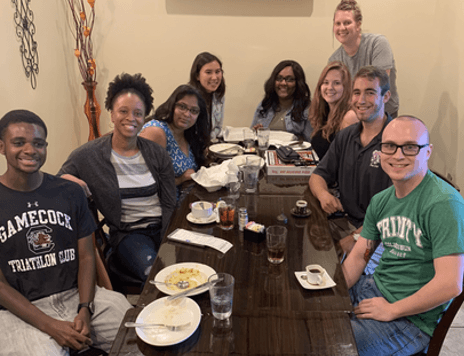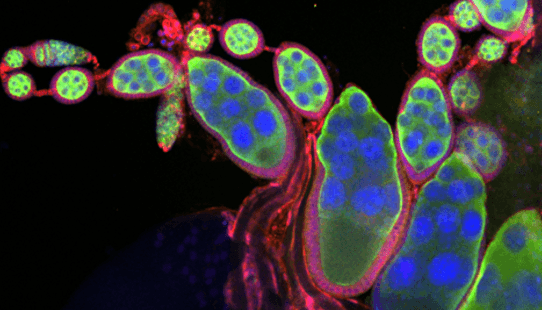Alissa Armstrong joined the biological sciences department in 2016 because, in her own words, “The Department of Biological Sciences' collegiality and broad range of research areas attracted me to UofSC. I knew that being around colleagues with different interests would bring a new angle to my research.”
During her time at UofSC, Armstrong has established an exciting research program focused on understanding how nutrient sensing by multiple organs and tissues influences the activity of adult stem cells. Her research has important implications for our understanding of the association between obesity and increased risk of diabetes or cancer which are three major public health concerns. “Affecting over 30% of adults in the United States, obesity is linked to multiple diseases including hypertension, chronic inflammation, multiple cancers, and diabetes," Armstrong says. "A key to breaking the association between obesity and its comorbidities will be understanding how fat tissue relays nutritional information to different organs."
I knew that being around colleagues with different interests would bring a new angle to my research.
— Alissa Armstrong
Originally from Newport News, Virginia, Armstrong pursued her doctoral studies in the Department of Biology at Johns Hopkins University in the laboratory of Rejji Kuruvilla, where she studied the development of the peripheral nervous system. For her postdoctoral work, she switched fields and joined the laboratory of Daniela Drummond-Barbosa at the Johns Hopkins Bloomberg School of Public Health. During this time, she established the research program that her laboratory is now pursuing.
The Armstrong laboratory at UofSC focuses on understanding how adipocytes (fat cells) coordinate the response of adult stem cell populations to changes in an organism’s nutritional input. Adult stem cells play a key role in tissue homeostasis and damage repair. A largely unknown question is how adult stem cells cooperate with other tissues to ensure appropriate cellular responses to whole-body physiological state.

Alissa Armstrong and her lab members
The research in her laboratory uses Drosophila melanogaster (the fruit fly) as a model system to interrogate how stem cells respond to nutritional status. This genetically tractable system utilizes organs analogous to those used by mammals to regulate physiology. In particular, the Armstrong laboratory utilizes Drosophila ovaries, as these organs have a dramatic response to changes in diet which can alter the production of eggs. This response is largely mediated by effects on the ovarian stem cells. Part of the work in Armstrong’s laboratory has now been published in Developmental Biology, and her group recently published a review on this topic in the journal Reproduction.
One of my favorite aspects of academia is training the next generation of scientists.
— Alissa Armstrong
Armstrong’s work has been internationally recognized. Cell Mentor, an online publication of Cell Press and Cell Signaling Technology, named her among the 100 most inspiring Black scientists. She was also recently awarded the SC Idea Networks of Biological Research Excellence Developmental Research Project award. The College of Arts and Sciences awarded her a McCausland Faculty Fellowship, which is given to faculty that bring innovation to their research and teaching. This comes as no surprise, as Armstrong has a state-of-the-art research program and developed a novel UofSC course focused on adult stem cells and their environment. This is an original class that instills critical thinking in her students and has had glowing reviews. Dr. Armstrong is a fantastic and inspiring mentor who has worked with postdoctoral, graduate and undergraduate mentees. Several of her students have received prestigious research awards including the Magellan Undergraduate Research Award, SPARC graduate Research Grant and ASPIRE postdoctoral award.

Drosophila ovarioles, showing the germ cells in green, the nuclei in blue, and the
cellular membranes in red.
Armstrong says, “One of my favorite aspects of academia is training the next generation of scientists. It is incredibly fulfilling to see a spark ignited for basic research science in the students in my classes and the trainees in my lab.”
We are looking forward to the exciting discoveries from her research group and hope you are, too! To learn more on the research in the Armstrong laboratory, visit her website.
